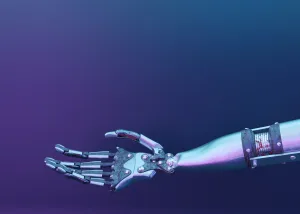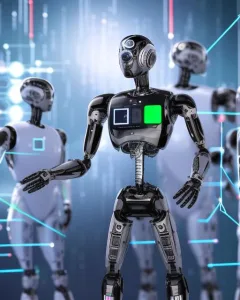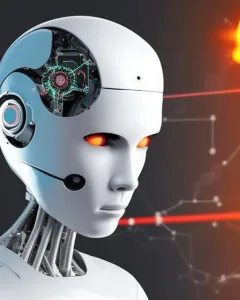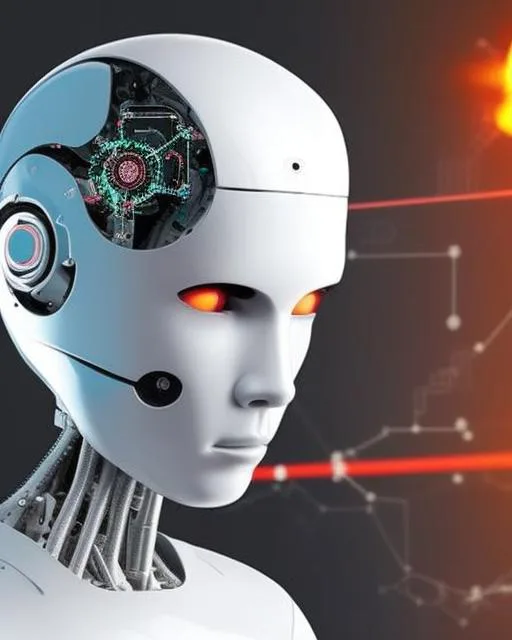Have you ever heard of AI alignment? It’s a concept that is rapidly gaining attention in the tech world, as experts worry about the potential risks posed by unchecked artificial intelligence. From autonomous weapons to self-driving cars, advances in machine learning could have serious consequences for humanity if not regulated properly. In this article, we’ll explore what AI alignment is and why it matters so much.
AI alignment refers to programming artificial intelligence (AI) systems with ethical principles built into their decision-making process. This ensures that these machines act according to our values and don’t cause any unexpected harm or destruction. To achieve this goal, researchers are developing algorithms that provide guidelines on how robots should make decisions based on human input.
It may seem like an obscure technical problem, but there’s no question that AI alignment is critically important today. As technology progresses, new forms of intelligent machines will be developed and deployed faster than ever before – making it essential we ensure they operate within moral and ethical boundaries set by humans. Without proper regulation, mankind faces the risk of being overtaken by its own creations; posing a very real threat to our future safety and security.
1. What Is AI Alignment?
 It’s estimated that AI will be responsible for up to $15.7 trillion of global GDP by 2030. This incredible figure highlights the immense potential of Artificial Intelligence (AI) and its importance in our future economy, but it also raises an important question: how can we ensure this technology is being used responsibly? The answer lies in AI alignment – a field which seeks to create ethical frameworks and protocols for developing safe, beneficial and accountable AI systems.
It’s estimated that AI will be responsible for up to $15.7 trillion of global GDP by 2030. This incredible figure highlights the immense potential of Artificial Intelligence (AI) and its importance in our future economy, but it also raises an important question: how can we ensure this technology is being used responsibly? The answer lies in AI alignment – a field which seeks to create ethical frameworks and protocols for developing safe, beneficial and accountable AI systems.
At its core, AI alignment looks at how humans can effectively teach machines to act according to human values and expectations. To do this, machine-learning algorithms are designed with rigorous safety measures that help make sure they don’t go off course or learn undesirable behaviours. Additionally, researchers look into ways of making AI agents explain their decisions so that people understand why certain outcomes were chosen over others – creating more accountability within these systems.
The need for effective AI alignment has become increasingly apparent as businesses continue to invest heavily in automation solutions without proper oversight or understanding of their implications. With the right precautions in place, however, companies can leverage these powerful technologies while avoiding any negative impacts on society or individuals’ lives. In order to guarantee success, teams must work together to develop meaningful ethical principles and techniques that allow them to use AI safely and ethically moving forward.
2. The Goal Of AI Alignment
Gazing into the future, it is becoming increasingly clear that AI alignment must be a crucial consideration if we are to foster a prosperous society. The goal of AI alignment is twofold: to ensure that artificial intelligence operates safely and ethically in accordance with human values, as well as taking into account our long-term interests. But why should this matter?
AI has already made its presence felt across many aspects of modern life, from automated driving systems to virtual personal assistants – but these developments have been limited by technological capability rather than ethical considerations. As technology advances, however, there is an ever-growing potential for AIs to take on more advanced tasks such as medical diagnostics or financial advice; tasks which could have significant consequences if deployed without proper safeguards. It’s therefore important that these safety measures are put in place before disaster strikes; hence the need for AI alignment.
To achieve this end, researchers and developers work together to identify appropriate goals and metrics for evaluating algorithms’ decisions – something which can often be difficult due to the complexity of real-world scenarios. However, getting it right will prove invaluable in helping us make sure that any AI system developed acts only in our best interests. In other words, finding successful ways of aligning machines with our own values may just be the key to unlocking safe and beneficial uses of AI going forward.
3. The Challenges Of AI Alignment
Ah, the challenges of AI alignment. It’s no secret that this is a hot-button issue in today’s world, and it can be incredibly tricky to solve! After all, how do you ensure that an artificial intelligence system behaves ethically and responsibly? Well, we might need a miracle for that – but at least there are some steps being taken towards finding solutions.
The main challenge of aligning AI with human values lies in understanding what those values actually are. How can algorithms know what humans want if we don’t even fully understand our own motivations? This has led to research into defining criteria for ‘good’ behaviour, such as robustness and explainability. The idea here is to create models which can identify potential risks or dangerous actions before they become reality – thereby avoiding potentially devastating mistakes.
In spite of these efforts, many researchers worry about the safety implications of creating powerful AIs without having clear ethical guidelines in place first. With technology advancing faster than ever before, it’s imperative that we get ahead of any potential issues before they arise – otherwise we could find ourselves on the wrong side of history. If we want to maintain control over our creations, then figuring out ways to accurately measure their adherence to moral standards must remain a top priority.
4. The Benefits Of AI Alignment
 Just as a ship needs an anchor to stay afloat, artificial intelligence systems need alignment in order to operate effectively. AI alignment is the process of ensuring that AI systems act according to their programmer’s intentions and ultimately benefit humanity. By aligning these powerful tools with our goals and expectations, we can reap numerous benefits.
Just as a ship needs an anchor to stay afloat, artificial intelligence systems need alignment in order to operate effectively. AI alignment is the process of ensuring that AI systems act according to their programmer’s intentions and ultimately benefit humanity. By aligning these powerful tools with our goals and expectations, we can reap numerous benefits.
The potential applications for AI are nearly limitless; however, it’s essential that they remain ethical and beneficial — otherwise, the consequences could be disastrous. Aligning AI with human values is no small task but when done properly, it can bring about tremendous rewards. For example, by using automated decision-making processes built on robust datasets and accurate algorithms, businesses can optimize operations more efficiently than ever before. This not only increases productivity and efficiency but also helps decrease operational costs.
On top of this, well-aligned AI technologies have been used to solve some of society’s most pressing issues such as poverty, health care access and climate change mitigation. Such advances enable us to save money while simultaneously making significant steps towards creating a better future for all humankind. In short, AI alignment offers a multitude of advantages which make it an integral part of technological development today.
5. The Debate Around AI Alignment
The debate around AI alignment is a complex and intricate one. On the one hand, there are those who believe that aligning Artificial Intelligence with human values is essential for its safe use. They argue that if we do not ensure AI acts in ways that benefit humanity, then it could cause catastrophic damage to our society. On the other hand, some people think that trying to control AI by coding it according to certain ethical principles may be impossible or even dangerous.
Proponents of AI alignment insist that without these measures, we cannot trust AI systems with important decisions about resources and lives. They also point out that misaligned AI can lead to disastrous outcomes such as machines acting against their creators’ intentions and causing massive harm. Furthermore, they mention how controlling algorithms might require monitoring from external actors, thus raising questions of privacy and security issues.
Opponents of AI alignment counter this argument by claiming that it attempts to impose an unrealistic moral standard on machines which lack a moral framework of their own. Moreover, they suggest that giving too much power over decision-making processes to algorithms might result in humans becoming overly reliant on them or even losing control over them altogether. Ultimately, whether we should pursue AI alignment depends on weighing different factors including safety concerns, economic benefits, ethical considerations and technological capabilities.
6. Current Progress On AI Alignment
AI alignment is an important area of research within the field of artificial intelligence. In fact, according to recent studies, AI safety investments have increased by 500% over the last five years as more and more organizations look for ways to ensure that their AI systems are operating safely and effectively. It’s clear that this is a growing concern in today’s world.
So what progress has been made on the issue of AI alignment? Well, great strides have been taken in developing methods to measure how well algorithms perform with respect to certain tasks or goals – essentially helping us understand whether our machines can be trusted when it comes to completing these tasks autonomously. A number of tools and approaches such as reinforcement learning, reward functions, and decision theory are being used to help design more trustworthy machine-learning systems.
At the same time, ethical considerations remain a key part of AI development. Researchers continue to focus on understanding potential risks associated with new technologies so that they can develop safeguards before any negative consequences arise from misaligned AI behaviours; this includes addressing issues like bias and privacy concerns which often come up during testing phases. With continued work in this space, we may soon see even safer and fairer applications of AI technology across various areas ranging from healthcare to transportation.
7. The Future Of AI Alignment
 As we peer further into the future, it’s clear that artificial intelligence alignment is set to become an increasingly critical topic. Through a rhetorical device of juxtaposition, one can see both the potential promise and peril of AI if not properly aligned with human values. Consequently, exploring what the future holds for AI alignment merits attention.
As we peer further into the future, it’s clear that artificial intelligence alignment is set to become an increasingly critical topic. Through a rhetorical device of juxtaposition, one can see both the potential promise and peril of AI if not properly aligned with human values. Consequently, exploring what the future holds for AI alignment merits attention.
The goal of AI alignment is simple: to ensure that AI systems are created in such a way as to ensure they act in accordance with our best interests – rather than potentially going against them. To achieve this, researchers have proposed various frameworks which seek to specify how humans should interact and collaborate with AI agents in order to align their objectives and goals. For example, one popular approach involves creating algorithms which ‘learn’ from past mistakes so that any subsequent decisions made by the algorithm reflect those lessons learned.
Looking ahead then, there is ample opportunity for continued research and development around this important subject; particularly given the rapid advances being seen within machine learning technologies. From improving decision-making processes through greater transparency and auditability to embedding ethical considerations into underlying models, the possibilities are exciting yet plentiful when looking at how far we can take AI alignment over time.
Conclusion
In conclusion, AI Alignment is an important area of research that requires a great deal of attention and consideration. It’s a complex issue with many layers and facets to consider, but the potential rewards for humanity are tremendous if we can successfully align AI systems with our own values and ensure they act in accordance with our wishes. The debate around AI alignment has been ongoing since its inception, but it’s clear that current progress on this topic has been promising. We must continue to work together to define how best to use AI responsibly while still benefiting from its incredible capabilities. Doing so will require collaboration between experts in areas such as philosophy, computer science, ethics, law, and public policy. With the right dedication and effort, I am confident that human beings can reap all the rewards of artificial intelligence without sacrificing safety or morality along the way.
